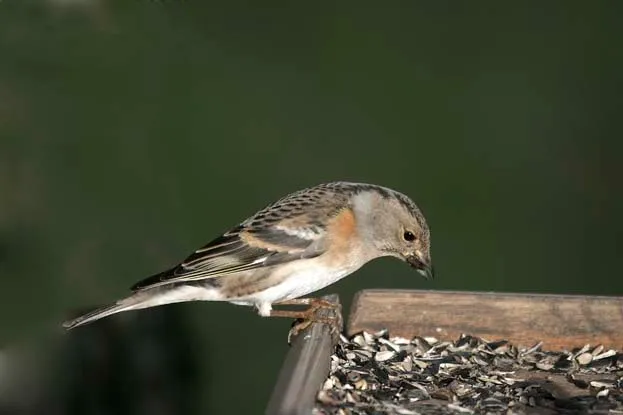1 Winter visitors
Bramblings do not arrive in the UK until late September and most have gone again by late April. Their numbers fluctuate year to year depending on the availability of beech mast in Finland, Scandinavia and Russia where they breed. Therefore, some years we may only see 50,000 birds in total and in other years there can be up to 2 million.
2 Seedeaters
During the autumn and winter bramblings gather in large flocks in areas with plenty of beech mast or conifer seeds, and are often seen alongside chaffinches. They will remain in these areas until the food has run out or is covered with snow, and then they will move south again. It is at this point that they will start to move into gardens, taking advantage of the bird food that we provide.
3 Attracting them to gardens
Although most gardens are only ever visited by a small number of bramblings, in winters where they are more common it is possible to try and attract more in. Bramblings prefer to feed on the ground, so seed mixes or peanut granules should be spread on the ground or a low bird table. Having tall trees in or around the garden may also help to draw them in.

Bramblings are more likely to visit bird tables than hanging feeders. © John Harding/BTO
4 Flocking behaviour
Like many bird species during the winter, bramblings may join up to form large roosts in the evening. In central Europe these can be made up of many millions of birds but in Britain they’re much smaller as fewer individuals come here to overwinter. However, one roost in Merseyside was estimated to contain more than 150,000 birds.
5 Gender and age division
Interestingly, male bramblings tend to winter further north than females, a behaviour also seen in chaffinches. Therefore winter flocks may be formed of birds that are mainly one sex. Young birds also tend to winter further south than adults. This is known as differential migration and probably results from competition for food in winter.
6 Identification
Bramblings of all ages have a white rump which is very useful for telling them apart from chaffinches. They also all have orange-brown shoulders, though these are more obvious in males. In the winter, the glossy black head of the male is obscured by buff-tips to the feathers, but this still helps to tell them apart from the females which have grey-brown heads.
The British Trust of Ornithology (BTO) works in partnership with over 40,000 volunteer birdwatchers to chart the fortunes of UK birds.
